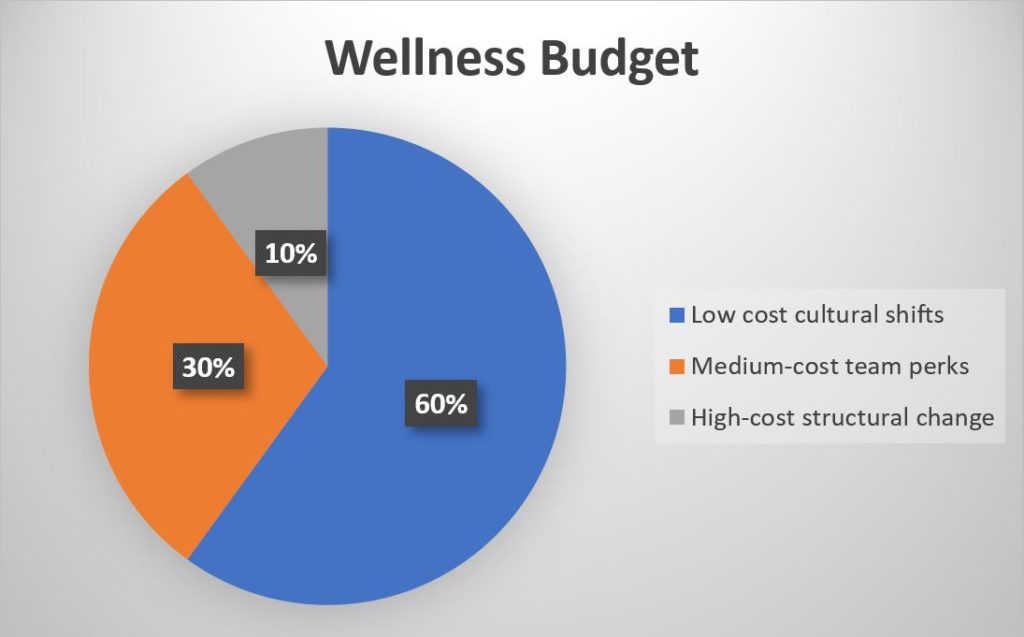
How much does it cost to build a workplace wellness program? Well, it depends, but as of last year, Employee Benefit Advisor said the average cost per employee was $742. If that sounds like a lot, keep reading. There are many ways to make workplace wellness affordable and feasible for your organization. Below are a few tips.
Look at both sides of the equation: potential costs and potential returns.
A quality workplace wellness program is a proven benefit to your bottom line. The returns can include lower healthcare costs, fewer workers’ compensation claims, and less turnover and recruiting costs, to name a few. These are powerful gains that can offset the expenses of your program.
Don’t forget to look at soft numbers, such as reduced absenteeism and better employee productivity. “When calculating the benefit of your wellness programs, traditional ROI metrics may not be the best measures of success,” according to Edukate. “By using VOIs [value on investments] in addition to ROIs, you can get a more complete picture of how your wellness program is performing.”
Get smart about blending low, medium, and high-cost offerings.
There are ways to reach the same wellness goals without breaking the bank. There are wellness options for every budget.
For example, installing an on-site exercise facility would entail a high price tag, of course. Offering memberships to a local gym or league might incur a medium-level cost. But it doesn’t cost anything to host walk-and-talk meetings, or to offer optional fitness breaks (flexible work hours) to your team.
The trick is to structure low, medium, and high-cost program elements in a way that’s not only financially feasible, but also experientially valuable to your team.
How should you structure your wellness budget?

With an approach like that, you may find that your budget falls right into place.
Be strategic and take baby steps.
Most important of all is getting the direction and pace of your program right. Gauge your team’s needs with a confidential survey and take a strategic approach to addresses the issues identified. Before implementing anything, carefully consider if the planned initiative addresses your team’s real issues in a meaningful way. Wellness is about turning actions into results. It’s not about just taking actions.
Don’t be afraid to start slow. Introduce a small change or initiative, communicate it well, engage your leaders’ support, and take time to get it right. Enjoy a small victory and build from there.
Download the 5 Step Wellness Roadmap for additional instruction.